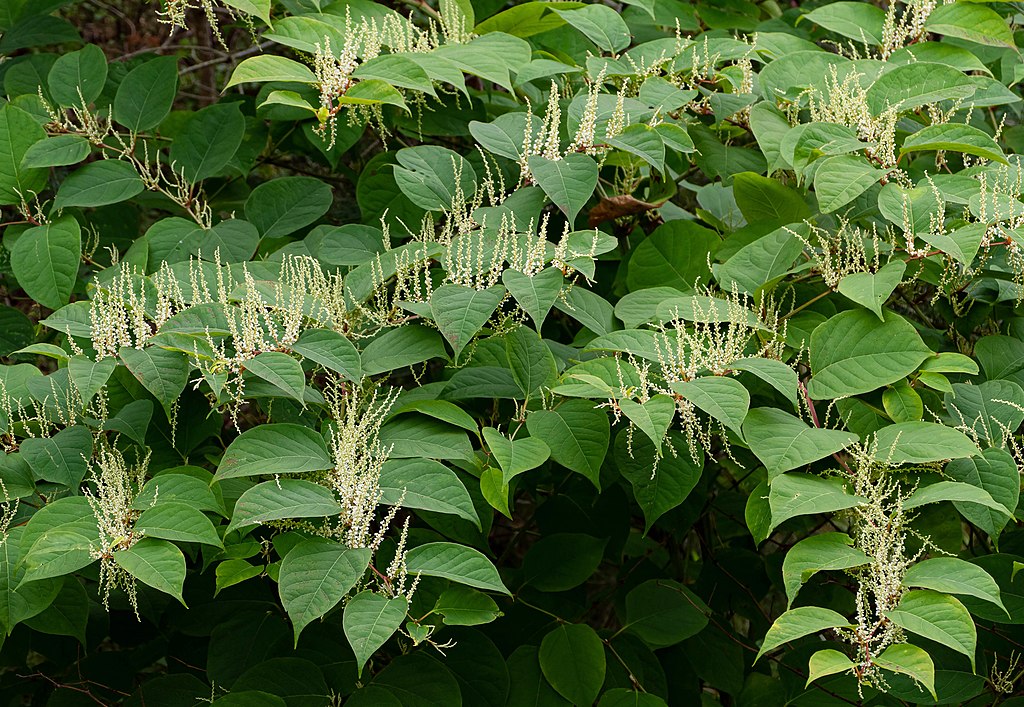Council must pay damages in Japanese knotweed claim brought by neighbouring property owner, Court of Appeal rules

The Court of Appeal has overturned lower court rulings that diminution in value in Japanese knotweed cases is irrecoverable economic loss and ordered a council in Wales to pay £4,900 in damages to a property owner.
The appellant in Davies v Bridgend County Borough Council [2023] EWCA Civ 80) purchased a house in Nant-y-moel in 2004 as an investment. He later found that Japanese knotweed, which had been growing on an adjacent plot owned by Bridgend County Borough Council, had spread onto his property.
Mr Davies then brought a claim in nuisance against the council, which was heard before District Judge Fouracre in Swansea County Court. At that hearing, the court established that it was likely that the plant had spread from the council land and onto his property before he bought the house.
The local authority contended that since the knotweed was already present on Mr Davies’ land, any damage arose before the breach of duty, and so, since the fact the property is affected by knotweed is not due to any breach, the claim was fatally flawed on causation.
This argument was rejected by the District Judge, who held that it was answered by the fact that there was a continuing nuisance and breach of duty as a result of persisting encroachment.
While the initial encroachment was historic, any loss suffered by the appellant in principle continues and will accrue by the continuation of the breach in the respondent’s failure to treat the knotweed, the district judge said.
He also held that unless and until the respondent council treated the knotweed on its land, any attempt by the appellant to eradicate knotweed on his own land would have been futile.
The district judge concluded that the council was in breach of the relevant duty in nuisance owed to the appellant as a neighbour, starting from 2013 and on until 2018, when a treatment programme finally started. There has been no appeal from this conclusion about a breach from 2013-2018.
Damages for “residual diminution”, also called “blight”, were then claimed for £4,900. However, the district judge dismissed the claim, holding that all the diminution in value damages were irrecoverable in law in a case like this, based on the decision of the Court of Appeal in Williams v National Rail [2018] EWCA Civ 1514, [2019] QB 601.
Mr Davies appealed this decision, arguing that the damages were losses consequential on the nuisance found.
Circuit Judge HHJ Beard later dismissed the appeal on 27 May 2022. HHJ Beard accepted that the diminution in value claimed was consequential on the nuisance identified by the previous court, but concluded that Williams was authority for the proposition that damages for diminution in value due to knotweed are irrecoverable in nuisance.
A second appeal was then lodged, which solely contended that previous judges had erred in that they had misunderstood Williams, and that Williams was not an authority against the appellant’s case.
The council contended the judgments were right, advancing two points. The first being a challenge to the causation point, which it had lost in all of the previous cases, and the second being a submission about the quality of the appellant’s evidence of diminution in value itself.
In Williams, the claimants had brought a claim in nuisance against Network Rail Infrastructure Ltd (NR), the proprietor of neighbouring land. The claimants won both at first instance and on the appeal and the damages awarded included various items with one for the residual diminution in value of the land (or stigma).
The damages were summarised in the judgment in the Court of Appeal as follows:
“The Recorder then addressed damages for the diminution in value of the claimants’ properties arising from interference with their quiet enjoyment of their land. The Recorder held that, given that the claimants were entitled to recover damages to treat the knotweed in order to remove the nuisance, the appropriate diminution in value was the residual diminution in value once the treatment was completed. The Recorder held (at [243]-[259]) that Mr Williams was entitled to £10,500 and Mr Waistell was entitled to £10,000 for that reason.”
Before the Recorder at first instance, the claims in Williams were examined on two fronts: encroachment onto the claimant’s land and the presence of knotweed on the defendant’s (NR) land.
The Recorder ruled that there was no tort of nuisance in the first basis, as the knotweed on the claimant’s land caused no physical damage, and the fact the presence of the knotweed had resulted in a diminution in value of the two properties involved did not constitute damage.
However, the second basis, a quiet enjoyment/loss of amenity claim, was successful as the presence of knotweed on National Rail’s land was a serious enough interference with the claimant’s right of quiet enjoyment and amenity value to be considered an actionable nuisance. He considered that the diminution in value of the properties, combined with the fact that any owner would have to live with the concerns and adverse consequences of a devalued property, is properly characterised as an aspect of the amenity of the land protected by the tort of private nuisance.
Network Rail successfully appealed to the Court of Appeal on the second basis. Etherton MR concluded that no tort was made out on the second basis because the presence of knotweed on NR’s land does not become an actionable nuisance simply because it diminishes the value of the claimants’ land.
However, the Court of Appeal then turned to consider the respondent’s notice relating to the Recorder’s rejection of the first basis, i.e. the claim based on knotweed which had encroached onto the claimant’s land.
The Recorder was found to have erred in requiring there to be physical damage to the property.
The court decided that the (non-trivial) presence of knotweed on the claimant’s land was an immediate burden, and it interfered with amenities/quiet enjoyment. In so far as damage is needed to complete the tort, it was provided by the diminished ability of the claimant to use and enjoy their property.
In deciding to award the claimant’s damages, including damages for diminution in value, the Court of Appeal judge wrote: “I see no reason why the claimants should not be able to argue and succeed before us on the ground of an unlawful interference with their enjoyment of the amenity of their properties due to the impairment of their right to use and enjoy those properties. They have not relied upon any evidence that was not before the Recorder, and the characteristics and damaging nature of Japanese knotweed have always been at the very heart of this litigation.”
In Davies v Bridgend County Borough Council, Birss LJ responded to the council’s claim that the previous decisions had misinterpreted Williams, stating: “In a case in which the knotweed is on the defendant’s land, even if it is close to the boundary and at risk of invading the claimant’s land, Williams holds that the reduction in market value of the claimant’s land which this causes does not result from physical damage nor from physical interference with the claimant’s property and therefore does not amount to a nuisance.
Birss LJ continued: “Putting a small gloss on the opening words in paragraph 48 of Williams, I would say that the purpose of the tort of nuisance is not simply to protect the value of property. After all Williams itself later recognises that if the value of the claimant’s property is diminished as a result of an interference with the claimant’s quiet enjoyment or amenity, due to physical encroachment of knotweed from the defendant’s land into the claimant’s land, damages including diminution in value of the property will be available. Putting it another way, the reasoning in paragraph 48 of Williams, which the judges below relied on, is nothing to do with recoverability of damages in a case in which the tort of nuisance is complete.”
He allowed the claimant’s appeal on that point but made a further point about the submission by the respondent that even if this analysis of Williams was right in general terms, Williams was not authority which goes as far as saying that any encroachment of knotweed into the claimant’s land amounts to material interference with quiet enjoyment or amenity and thereby to actionable nuisance.
He ruled: “In oral submissions it was said that what is necessary to complete the tort is ‘encroachment plus’. In other words the materiality aspect of the required interference demands an examination of the impact of the encroaching knotweed. This submission is based on paragraph 55 of Williams (cited above).
“Counsel drew attention to the second sentence which refers to knotweed constituting a future risk to structures, and to the third and fourth sentences which are focussed on an increased difficulty in developing the land if the owner wished to do so. The submission is that at least one of these two features has to be present (or something like them) in order for knotweed on the claimant’s land to be an actionable interference with amenity. The point is that in the present case on the evidence no risk to structures was identified, and there was a specific finding that there is no prospect of developing the property.
“I would agree that a trivial or de minimis encroachment of knotweed would not be actionable on this basis, but that is not what this argument is about. There was no finding in the present case that the knotweed in the claimant’s land was merely trivial. The submission is that proving a non-trivial encroachment of knotweed into land is not enough, and that to establish nuisance the claimant also has to prove that the knotweed is also a risk to structures on the land, or that there is a prospect of improving or altering the property which the knotweed interferes with, or something similar.”
He rejected this submission, noting that he read that the two points in Williams – future risk and increased difficulty in development – are given “simply as examples of interference with amenity in order to illustrate why knotweed can fairly be called a ‘pernicious weed’ and a ‘natural hazard'”.
“Reading Williams as a whole, the point being made is a distinction between ‘pure economic loss’, i.e. loss without physical damage or physical interference which is not actionable, and cases in which there is physical change to the claimant’s property as a result of the presence there of knotweed rhizomes.
“Once that natural hazard is present in the claimant’s land (to a non-trivial extent), the claimant’s quiet enjoyment or use of it, or putting it another way the land’s amenity value, has been diminished. For the purposes of the elements of the tort of nuisance that amounts to damage (paragraph 56 last sentence) and it is the result of a physical interference. If consequential residual diminution in value can be proved, damages on that basis can be recovered. They are not pure economic loss because of the physical manner in which they have been caused.”
Birss LJ then turned to a notice submitted by the council that advanced two points: one being a challenge to the causation point, and the other was a submission about the quality of the appellant’s evidence of diminution in value itself.
He dismissed the first and found that there was no evidence for the second point, concluding that £4,900 “would be a fair figure” for the residual diminution in value in this case.
Lord Justice Snowden and Lord Justice Baker agreed.
Adam Carey


